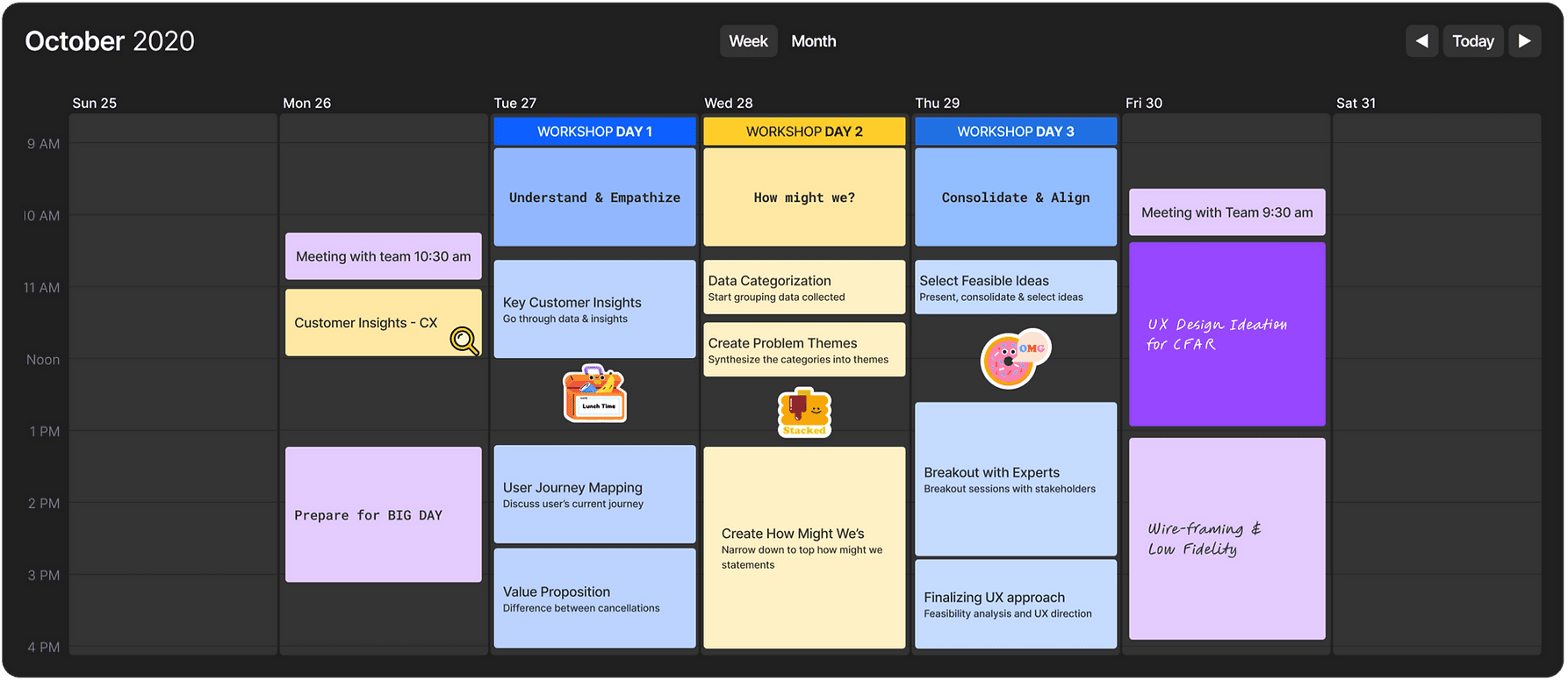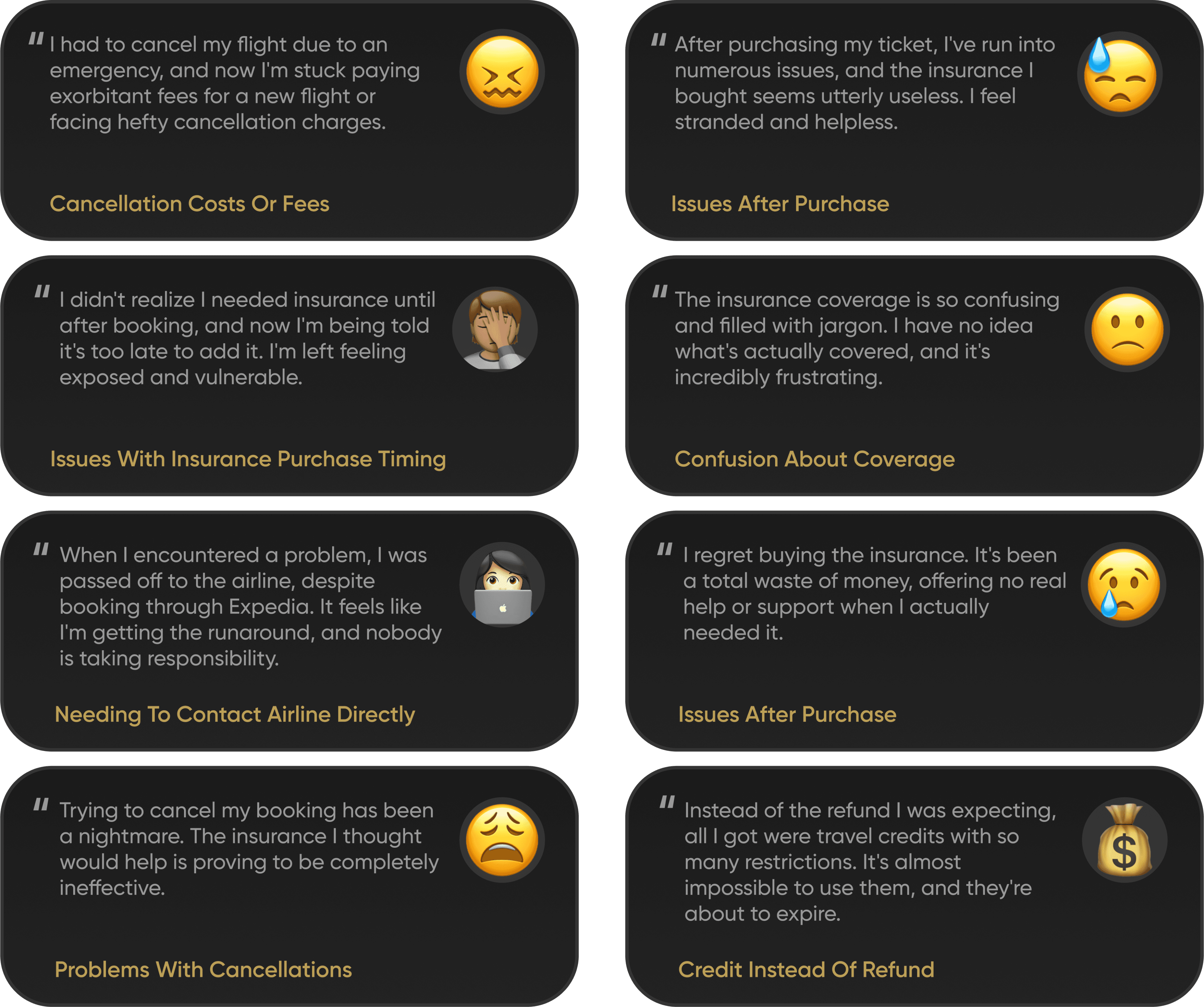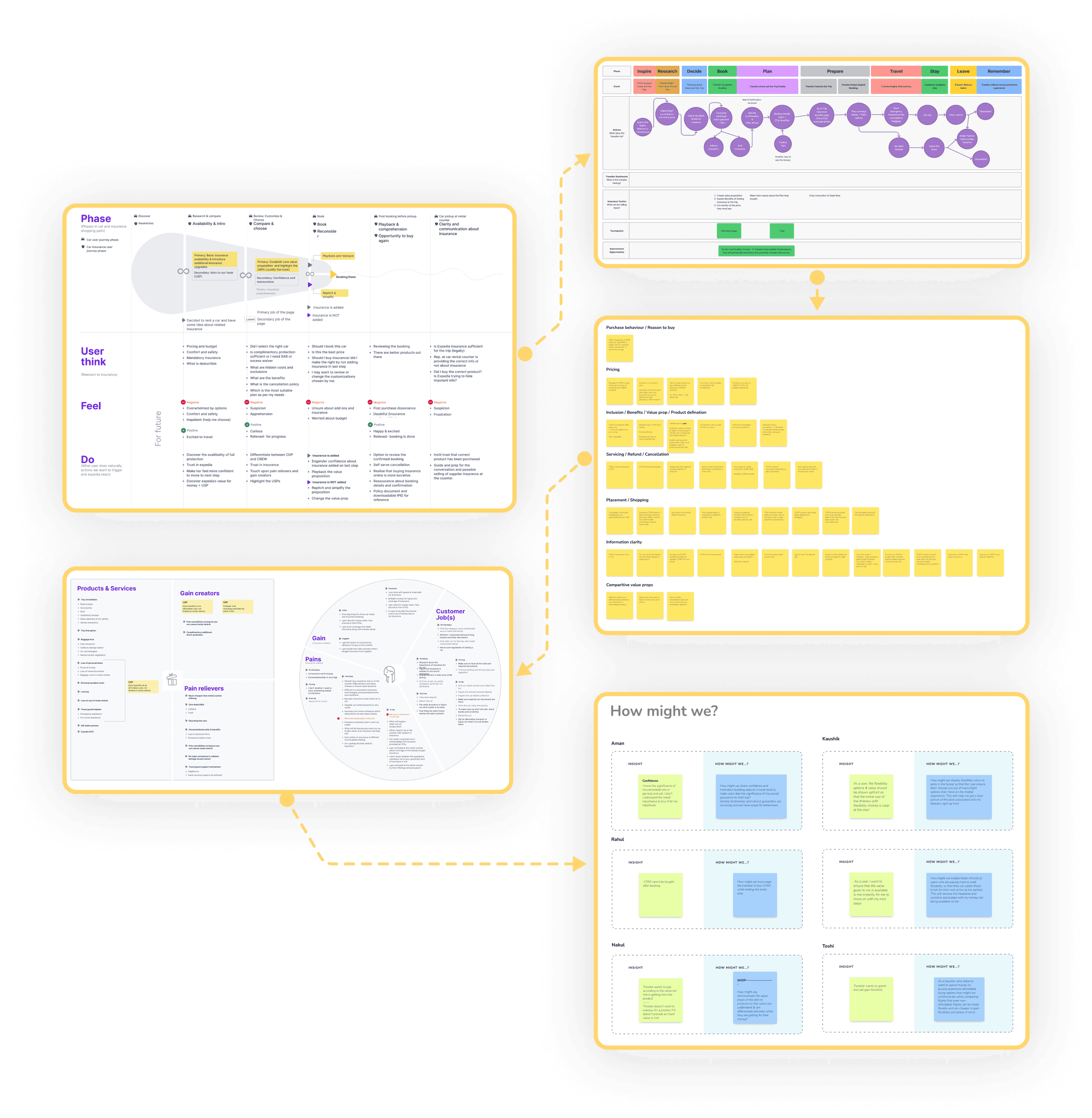
Expedia- Making trip cancellation accessible for our travelers
Methods
Workshops
Competitive Analysis
User Research
Stakeholders
Senior Leadership
Developers
Insurance partners
Year
2022
Client
Expedia
Service
Commercial
Location
Gurgaon
Why?
Covid Chaos Cancelled: Designing Flexible Travel Booking
December 2021 saw travel bookings plummet by 30-50% due to Covid concerns, leaving many frustrated with inflexible policies and lost funds. This case study explores the design of a revolutionary travel booking platform that prioritizes flexibility and affordability. We tackled the challenge of empowering travelers to easily change or cancel trips while ensuring they maximize the value of their travel budget. Discover how we designed a user-centric solution for a post-pandemic world, prioritizing both freedom and financial security.
How?
Introducing a product that provides users with unparalleled flexibility.
In a world where plans could change in an instant, we introduced a product that gave travelers the ultimate flexibility to adapt their bookings with ease. Whether it was adjusting dates, destinations, or even canceling entirely, our feature ensured that users remained in control of their travel plans without the worry of rigid policies or unexpected fees. Designed to offer peace of mind and seamless changes, this product empowered users to travel on their terms, with freedom and confidence.
Research
A Travel Industry Catastrophe
2M
Bookings Cancelled
Reduced claim processing time (From 2 weeks to 3 days)
$500M
Revenue losses
CFAR specific revenue Generated in 2021-2022
103,000
Flights cancelled
Percentage of trips booked with CFAR that were subsequently canceled
77%
Less air travellers
From the pool of people who bought insurance
Secondary Research
Looking at what everyone’s doing
Top Competitor
Hopper
Refunds:
100%: Select flights ("Made refundable by Hopper")
Flexible: "Cancel for Any Reason" & "Change for Any Reason" (both ways)
CFAR: 100/80% refund (roundtrip, applies to entire booking)
Refund Method: Airline credit (1 year) or cash
Method:
Airline credit (1 year) or cash

Research Workshop
Unite, Understand, Unfold
We conducted a three-day research workshop for the product stakeholders to come together, understand the user problems, reframe the problem statement into achievable How-Might-We's, and run a robust feasibility analysis with the experts to find the best UX approach.
Customer Insights
Inflexible Bookings & Frustrated Travelers
Research Workshop Process
A Collaborative Research Odyssey
The workshop included the following:
Defining User Journeys
Value Proposition Mapping
Grouping Insights
Value Proposition Canvas
How Might We
Design
The Journey before CFAR
The workshop included the following:
Defining User Journeys
Value Proposition Mapping
Grouping Insights
Value Proposition Canvas
How Might We

Step 1
Home Page
This is where the user journey begins. The users decides the kind of trip they want to explore.



Impact?
Oh, we made some impact!
80%
Reduced claim processing time (From 2 weeks to 3 days)
$15M
CFAR specific revenue Generated in 2021-2022
8%
Percentage of trips booked with CFAR that were subsequently canceled
15%
From the pool of people who bought insurance
Performance Indicators
Key Learnings
We conducted a three-day research workshop for the product stakeholders to come together, understand the user problems, reframe the problem statement into achievable How-Might-We's, and run a robust feasibility analysis with the experts to find the best UX approach.
Cashback over Credits
We learnt that even the frequent fliers were deeply interested in cash-back over credits of any kind. they'd rather have their money in their hand, even though the credits could have been more value for money and hassle-free.
Users won’t pay more than 20%
As a matter of fact, we saw that user interest started declining substantially over the 17% premium mark and pretty much disappeared around the 20% premium mark on top of the base ticket price approached.
Future-proofing
COVID was a phase, and once it's gone, it might never return. We learnt that building the product so that it could merge seamlessly with the insurance product in the future without causing substantial user confusion was a great move.







